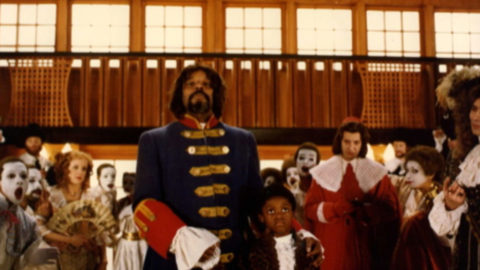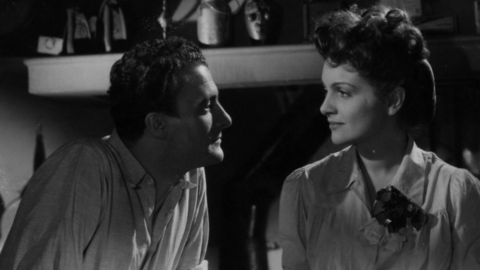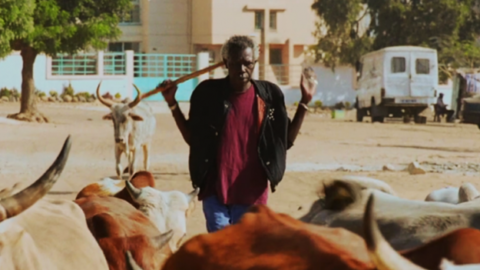Festivals: Il Cinema Ritrovato
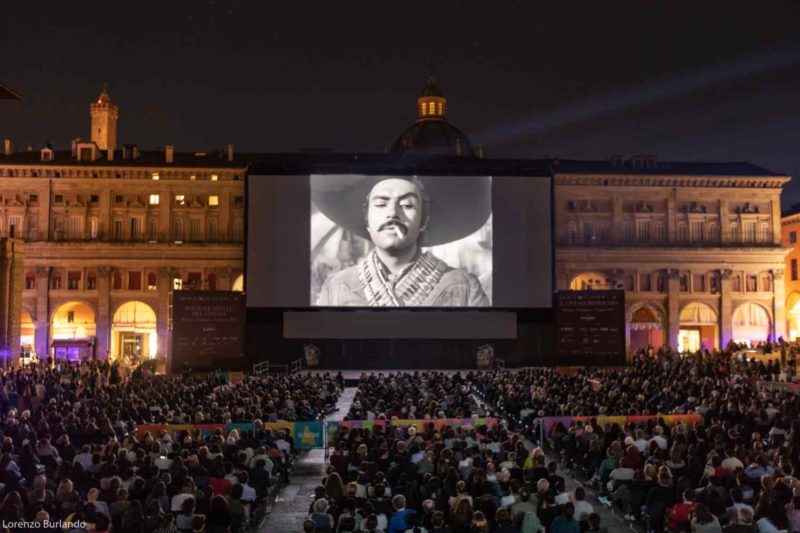
Bologna’s Il Cinema Ritrovato stands apart from most of the rest of the annual festival slate not so much for its noble function—the (re-)discovery and (re-)appreciation of films, filmmakers, and national film industries—as for the consistent success with which it excavates the medium’s past for shards of context for our cinematic and extra-filmic present. A week spent at the festival entails an immersion in these on- and off-screen histories, an experience made all the more disorienting by the fact that one inevitably emerges from the darkness of the cinema into the blinding light of day, a glance at one’s phone sucking one right back into the simmering, omnipresent stresses of 2018. Yet a number of the films showcased in this year’s edition, however inadvertently, laid bare the delirium that has seemingly always characterized the human experience of being in the world.
The festival also provides a crucial opportunity to view the products of the world’s most historically impoverished national cinemas alongside those of its most moneyed, allowing us to see for ourselves the plurality of ways in which cinema has captured and commodified the plight of individuals and nations amid the turbulence of time’s passage. Films can and do intervene in world-historical situations, but, perhaps more fundamentally, they record an era’s energies, uncertainties, achievements, troubles, and foreclosed possibilities, the “what could have been” always haunting “that which was.” Indeed, Il Cinema Ritrovato seems to feed off cinema’s essential relationship with reality as it happened, as it could have happened, as it might happen again if we continue to sleep at the wheel.
Djibril Diop Mambéty’s reputation as one of Africa’s all-time essential auteurs is largely founded upon a single film, his 1973 debut Touki Bouki. His next feature took nearly two decades to arrive: Hyenas premiered in competition at the 1992 Cannes Film Festival and, though decidedly more scarcely seen than Touki Bouki, is a more than worthy successor. Idiosyncratically adapting Friedrich Dürrenmatt’s 1956 play The Visit, Mambéty transposes the narrative to the Senegalese village of Colobane while retaining the play’s satirical tragicomedy. Mambéty’s aim, as explicated in an interview with N. Frank Ukadike published in 1999, was “to identify the enemy of humankind: money, the International Monetary Fund and the World Bank.” Hyenas pursues this end, sometimes obliquely and sometimes with indignant directness, by concerning itself with the return of a woman, Linguère Ramatou (Ami Diakhate), to Colobane after having been cast out some years earlier when Dramaan Drameh (Mansour Diouf), a local shopkeep, denied having impregnated her. Unfortunately for the prevaricating Dramaan, the Linguère who returns to Colobane has obtained an otherworldly level of wealth during the intervening time—she is “as rich as the World Bank,” one of the villagers claims—and has fatal revenge against Dramaan first and foremost on her mind. But in time she comes to realize that the steps she has taken to avenge herself have only distanced her from her own humanity, and that no amount of suffering on Dramaan’s part can neutralize the sadness she feels in witnessing the villagers falling hook, line, and sinker for the material gifts she lavishes upon them in exchange for their support for her murderous plot. Its status as a political parable notwithstanding, Hyenas is as visually inventive, tonally off-kilter, and fully realized as any work of its time: if Touki Bouki helped to launch a sensibility and a movement within African cinema, Hyenas marks one of its grandest achievements, a fact reinforced by the spellbindingly beautiful restoration of the film that was presented at the festival by its producer, Pierre-Alain Meier.
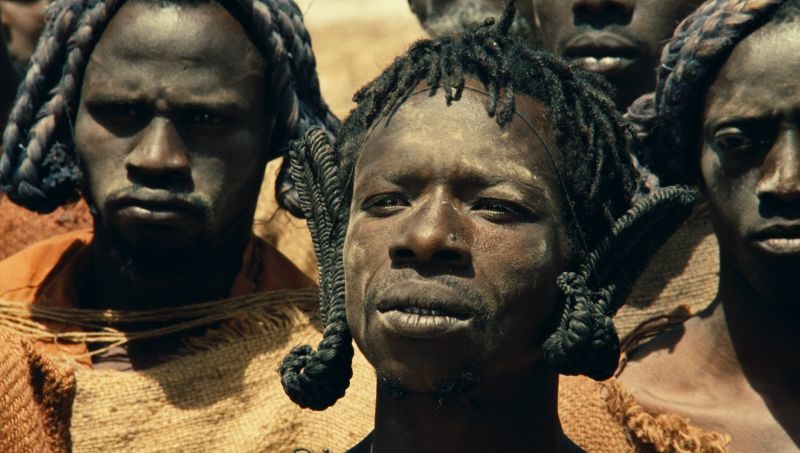
Hyenas
Another excellent restoration, of André De Toth’s astounding sophomore feature, None Shall Escape (1944), highlighted its disturbingly prophetic force. Produced prior to the end of World War II, the film somehow anticipates the Nuremberg trials with a remarkable hyper-clarity. A hearing about war crimes committed by brutal Nazi officer Wilhelm Grimm (Alexander Knox, giving a chilling performance) serves as the framing device for a protracted glimpse into his past and his relationships with three people against whom he has performed unspeakable forms of violence. But the film is no mere chronicle of one man’s cruel journey to the top of the heap in the Third Reich, ultimately becoming a Reich Commissioner overseeing the deportation of Polish Jews to concentration camps, nor is it simply a visceral representation of Nazi evils—though it does amply present them, including what’s surely among the most nauseating, graphic depictions of genocidal massacre in cinema up to that point. Rather, De Toth takes care to capture the resilience of those who, though the odds were impossibly stacked against them, resisted the Nazis’ attempted conquest of hearts and minds, and predicts that history will necessarily vindicate the underground. One of the most powerful aspects of None Shall Escape is that, by placing Grimm, his vicious acts, and his morally incoherent worldview at its center, it effectively illustrates how fascistic ethno-nationalism lends itself perfectly to people for whom violence, cruelty, and the inability to self-reflect are second nature. This bold, terrifically sad film looks its enemy dead in the eye while also gazing past them to a future when they’ll be held accountable for their crimes, knowing full well that no amount of postwar prosecution guarantees the barbarians won’t return again in another guise.
From the distressingly timely to time wackily out of joint: William Dieterle’s slightly schizophrenic 6 Hours to Live (1932), which was shown in the context of the festival’s version of Museum of Modern Art curator Dave Kehr’s survey of early Fox Film output, is among the zaniest films I’ve seen in recent memory. Synthesizing early/mid-century science fiction, the political thriller, and even a bit of comedy, 6 Hours to Live deals with the assassination and immediate afterlife of a diplomat (Warner Baxter) on the brink of a decisive vote at a high-stakes international trade conference. Naturally, there’s a mad scientist waiting in the wings to test his experimental resurrection technology on our newly murdered protagonist, and thus he returns to life—but for only six hours, after which time he’ll return to the realm of the dead. This proves to be time enough for him to pursue romantic closure with his fiancée (Miriam Jordan), cast the vote that got him killed in the first place, and catch his murderer dead to rights. Surely one of the most idiosyncratic antiwar films of its day, 6 Hours to Live—whose fateful trade conference was plainly inspired by the World Disarmament Conference at the League of Nations, which had taken place just one year earlier—changes its mind about its own genre and tone every five minutes or so, veering without a beat from noirish shadowy intrigues to melodramatic vagaries of the heart to backroom political maneuverings to flirtations with the beyond by way of the scientific imagination circa the early 1930s. It makes for an experience as disorienting, restless and captivating as watching a film by Raúl Ruiz, and its underdeveloped political message seems less the point than its bold refusal to be just one thing, choosing to embody a flood of ideas and moods over a singular, too perfectly calibrated metaphor.
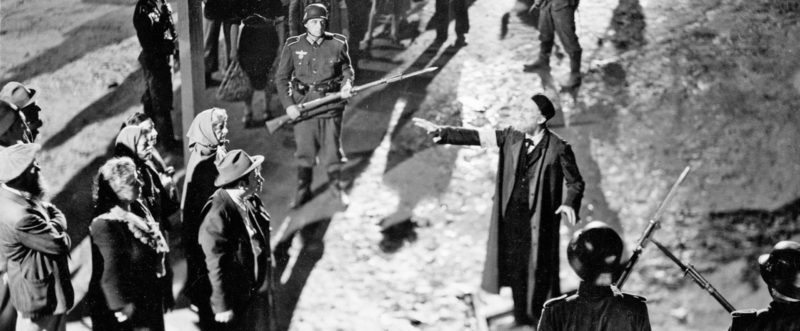
None Shall Escape
Finally, what would a festival dedicated to cinema’s past be without a sort-of séance? This year’s Il Cinema Ritrovato featured a performance from what elements exist of a previously-thought-lost serial by the pioneering avant-garde filmmaker Germaine Dulac, entitled Âmes de fous (1918). This was occasioned by the discovery of a few very short fragments of the film in a collection of nitrate material at Amsterdam’s EYE Filmmuseum, and these fragments, which EYE has digitally restored, were shown within the performance, along with an assortment of production stills, script pages, and other traces of what looks to have been an early yet quintessential work by Dulac. Âmes de fous was to tell the tale of the madness and intrigues that result from a marquis and his daughter being preyed upon by two scheming siblings in a haunted chateau, and the daughter’s subsequent, deliriously convoluted quest to restore her family’s honor. Emilie Cauquy and Clément Lafite of the Cinémathèque Française took turns reading aloud from the film’s scenario, which cohered with the aforementioned images, documents, and clips to conjure not so much the lost film itself as the politically progressive, aesthetically advanced, and narratively hallucinatory qualities the film seemed to possess—that is to say, it was an experience of the work’s aura more so than a reconstruction of the work itself. This approach left one with plenty of room to dreamily reflect on what was, what could have been, and what one day may come to be. (Hey, you never know: a film is always lost until it’s found, or something like that.)
It felt like a microcosm for the function of Il Cinema Ritrovato itself: from concrete audiovisual evidence emerges the spirit of history itself, reminding us that the past is both a chronicle of events that happened and people who lived but also a part of a continuum of energies still present today, still determining the shape of the future.
Dan Sullivan is the assistant programmer at the Film Society of Lincoln Center.



